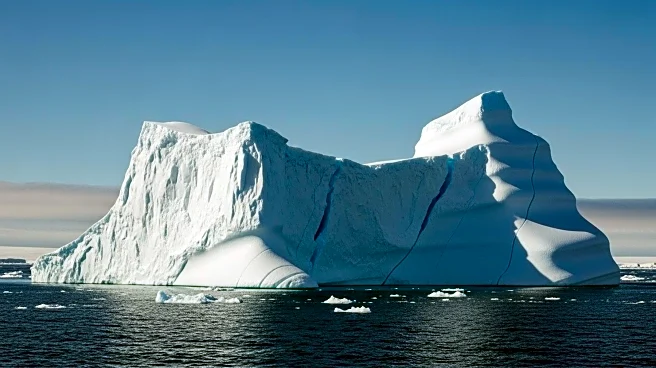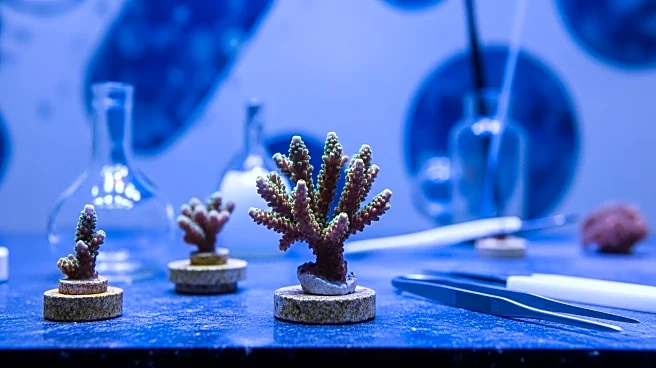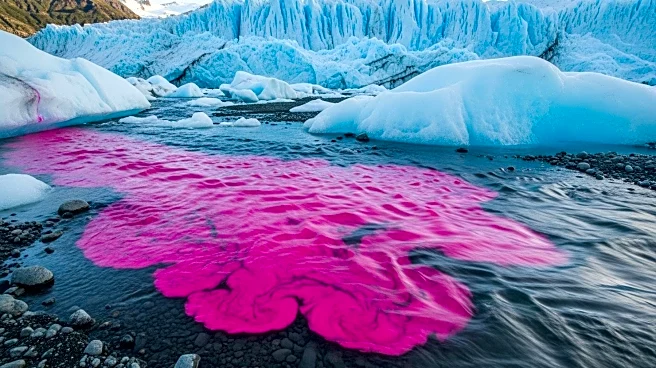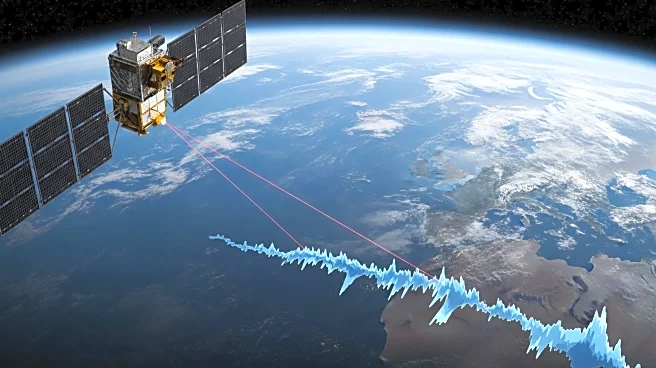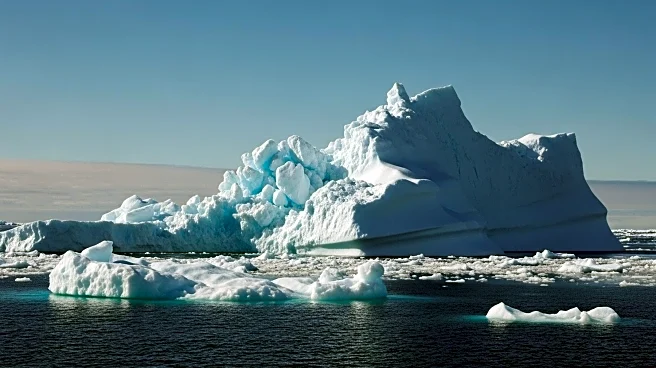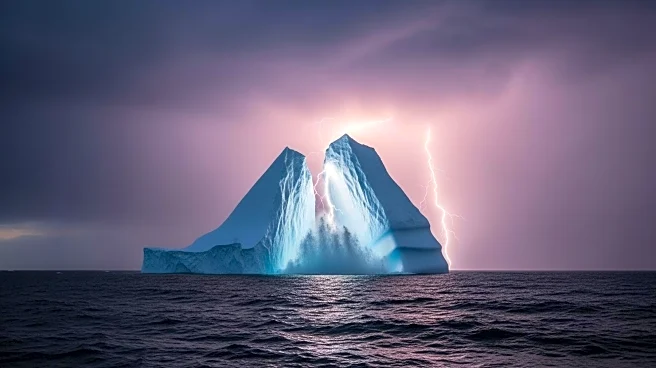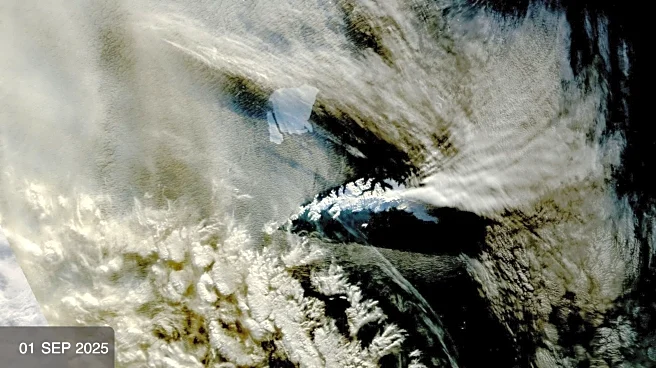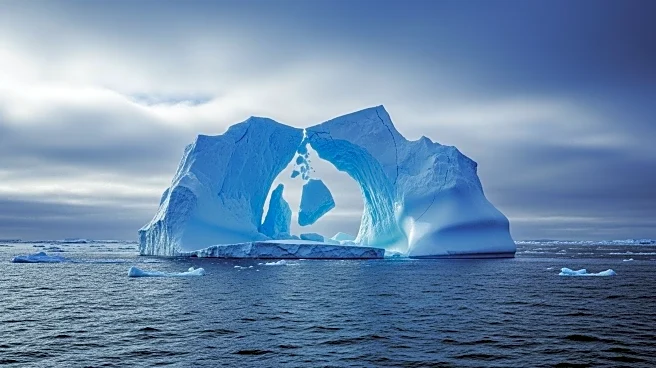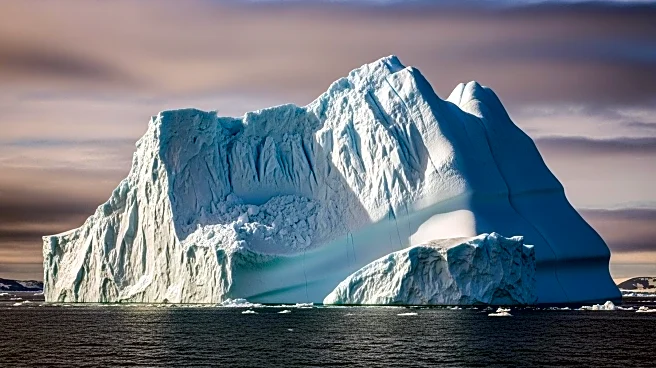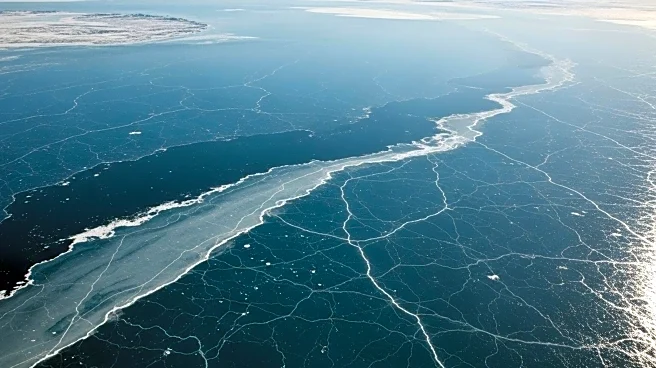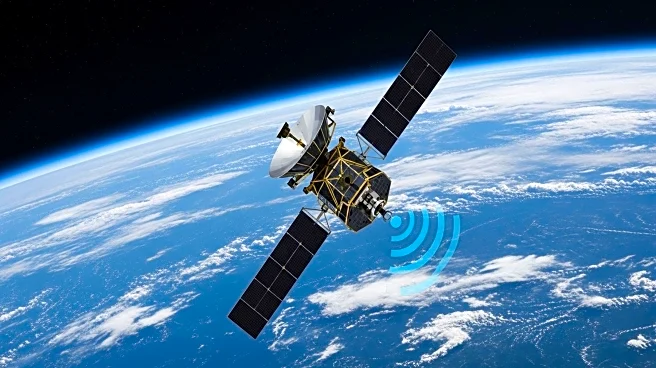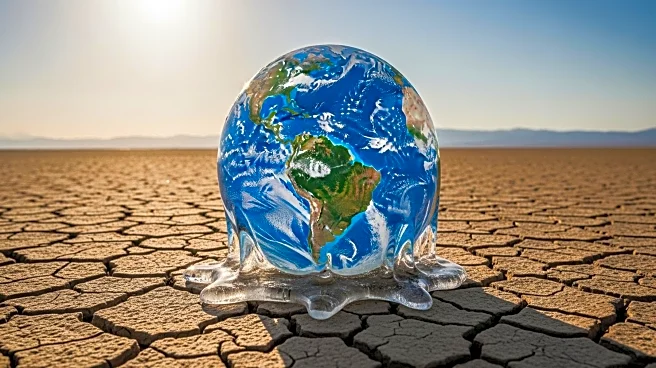What is the story about?
What's Happening?
The world's oldest and largest iceberg, A23a, is rapidly breaking apart in the South Atlantic Ocean. Originally calved from the Filchner-Ronne ice shelf in Antarctica in 1986, A23a has been tracked by scientists for nearly four decades. The iceberg, once the size of the Hawaiian island of Oahu, is now disintegrating into smaller pieces due to warmer ocean temperatures. This process is typical for icebergs, but A23a's journey has been unique, having been grounded multiple times before finally moving into open waters. Scientists from the British Antarctic Survey have been monitoring its movements and note that it is now too small to be tracked by satellite.
Why It's Important?
The disintegration of A23a provides valuable insights into the lifecycle of large icebergs and their environmental impacts. As the iceberg breaks apart, it releases fresh water into the ocean, which can affect local ecosystems and carbon levels. Understanding these processes is crucial for predicting future sea level changes and the broader implications of melting ice in polar regions. The data collected from A23a's journey will contribute to ongoing research on climate change and its effects on global sea levels, offering a better understanding of how large ice masses influence oceanic and atmospheric conditions.
What's Next?
As A23a continues to break apart, scientists will analyze the environmental changes in its wake, particularly the mixing of fresh and saltwater and its impact on marine life. This research will help refine models predicting sea level rise and climate change impacts. The findings could inform future policies and strategies for mitigating the effects of climate change, emphasizing the importance of continued monitoring and research in polar regions.
AI Generated Content
Do you find this article useful?
